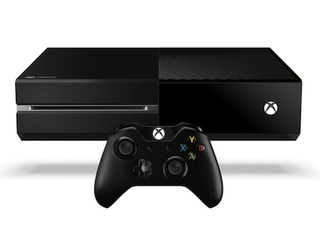Xbox One Adjusts Itself to Prevent Overheating
The Xbox One has several ways it self-regulates overheating.

Xbox General Manager of Console Development Leo del Castillo recently told Gizmodo in an interview that the Xbox One can tell when it's overheating and will make adjustments on the fly. This was revealed when the site asked how the team compensated for the console's book-like new design and the potential for owners to set an object on top of it. Consumers weren't faced with this potential stacking problem with the SNES and Nintendo 64.
He responded saying that although Microsoft can't prevent misuse of the Xbox One, the team can anticipate it by having the console monitor its temperature and cool itself down in several ways. First, the Xbox One will ramp down its power usage so that it's running on next to no power when the total thermal conditions are high. While this will reduce hardware damage, the price will likely come in performance.
MORE: PS4 vs. Xbox One: Console Comparison
"We can dial back the power of the box considerably," he said. "We had a little less flexibility with the 360. And so basically, if we couldn’t dissipate the heat, there wasn’t a whole lot of leverage we could pull to keep the heat from being generated, so we had a limited amount of time before it just shut down. Xbox One can actually dial it back to a lower power state, so low in fact that it can in a mode that uses virtually no air flow."
If the thermal problem continues, the console will try to lower the temperature by cranking the fan up to maximum. "We don’t actually intend it to ever have to go to maximum speed under normal environmental conditions," he added. "But there is overhead. So we’ll allow the fan to go all the way up to its maximum speed and if that solves the condition without the user having to do anything."
How Xbox One owners will see that it has entered a lower power state due to overheating is unclear at this point: will it be visually detectable in games, in applications, or will the console throw a warning up on the screen? Eventually Microsoft customers will be made aware of the problem once they hear the fan kick into high gear.
"I don’t know the exact details of how it’ll show up to the user," del Castillo explained. "But we try to be as transparent to the user as possible. We’ll allow the fan to go all the way up to maximum speed. They might notice the extra noise, and that will help to self-correct the condition."
Sign up to get the BEST of Tom’s Guide direct to your inbox.
Upgrade your life with a daily dose of the biggest tech news, lifestyle hacks and our curated analysis. Be the first to know about cutting-edge gadgets and the hottest deals.
He admitted that if the power reduction and the fan noise doesn't push the user to remove the hot pizza box off the console, it will likely throw up a warning on-screen telling them of an eventual meltdown. That definitely sounds better than a Red Ring of Death seemingly appearing out of nowhere.
Kevin started taking PCs apart in the 90s when Quake was on the way and his PC lacked the required components. Since then, he’s loved all things PC-related and cool gadgets ranging from the New Nintendo 3DS to Android tablets. He is currently a contributor at Digital Trends, writing about everything from computers to how-to content on Windows and Macs to reviews of the latest laptops from HP, Dell, Lenovo, and more.
